

The Italian coin was very popular and quickly imitated in Europe. In 1344, Edward III of England issued
his own gold coin valued at six shillings and having a weight of 108 grains. This coin was also called
a florin and also a double leopard from the two leopard heads that are on either side of the seated figure
of the king on the obverse. It was also struck in a half which was also known as a leopard from the leopard
with banner on the obverse. Finally, there was struck also a quarter, also called a helm after the helmet on
the obverse. With the exception of a very rare (and unpopular) penny (worth 20 silver pennies) struck in 1257
under Henry III, the coins of Edward III were the first gold ones struck in England in about 350 years.
There is some confusion about whether the largest coin is more correctly called a florin or a double florin. Spink,
in it's earlier editions, calls the large coin a florin and the two smaller ones a half- and quarter-florin
respectively. In later editions, however, the large coin is a double-florin and the smaller ones a florin and half-florin.
The only agreement is in the names of double leopard, leopard, and helm. The confusion stems from the proclamation
defining the coin. From Kenyon in 1884, Accordingly, in that year [1343] an indenture was made between the
king and the masters and workers and changers of the money, according to which three monies of gold were to be
made; one, which was called a florin, to be current at 6s, to be equal in weight to two petit florins of Florence
of good weight, i.e., 108 grains; and of the same fineness, namely, 23 carats 3½ grains pure gold to
½ grain alloy; and the half and quarter florin in proportion. The 'equal in weight to two petit
florins of Florence' is where part of the discrepancy in names comes in. The proclamation of 27 January 1343,
itself, states .one coin with two leopards, each piece to be current for six shillings, another piece of one
leopard, and another piece of one helm, being respectively the half and quarter of the larger coin, and of
proportional value.
The first florin of Victoria also ran into problems. The legends were simple and the one on the reverse was
just the value--ONE FLORIN ONE TENTH OF A POUND. The obverse was just as simple and is where the trouble
came from. It simply read: VICTORIA REGINA 1849. The traditional DEI GRATIA having been dropped.
Dei Gratia is Latin for By the Grace of God and these first florin came to be known as Graceless
or Godless.
This situation was remedied two years later with the introduction of the Gothic style florin. The reverse
of this coin bore the same legend but with a gothic style of text. The obverse, in the same style,
now included the words Dei Gratia. An even further departure from normal was the date was given
in Roman numerals. The first of these is a rare example from 1851 which bears the date as mdcccli. The
style of the portrait was the same as that of the Gothic crown of 1847.
In 1887 the design changed, coinciding with the celebration of Victoria's Jubilee. At this point, a double-florin
was also issued. This multiple was struck only until 1890. The Jubilee florin, however, was struck until 1892
when the design was again changed to show the Old Head.
This new style of reverse was short-lived and in 1911, upon the accession of George V, the cruciform shields
(four shields arranged in the form of a cross) again appeared on the reverse of the florin. There are a few
varieties of the coin that were struck during this reign, with the two most notable being the old effigy vs
new effigy and the debasement in 1920 to .500 fine silver. From 1849 to 1919 the florin had been struck in .925
fine silver with an overall weight of 11.3104 grams. This gave an actual silver weight for the coin of 0.3364 troy
ounce. In 1920 the overall weight of the coin remained at 11.3104 grams, but with the fineness reduced to .500,
the actual silver content was only 0.1818 troy ounce.
A new reverse design was created for the florin of Edward VIII. This reverse had a crowned Tudor Rose over
a Leek with a Thistle and Shamrock to the left and right respectively. This coin was never issued, though,
because Edward VIII abdicated on 10 December 1936.
The florin continued to be struck until 1967, with a proof (last of the pre-decimal coins) being struck in 1970.
For several years after Decimalization, the florin was accepted in trade at the value of ten of the New Pence.
Florin Coins of England and Great Britain
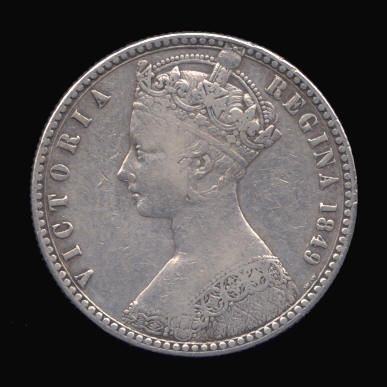
1849 Godless Florin
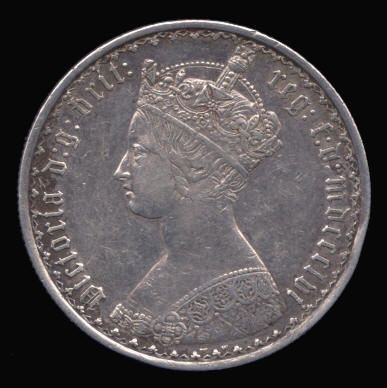
1856 Gothic Florin
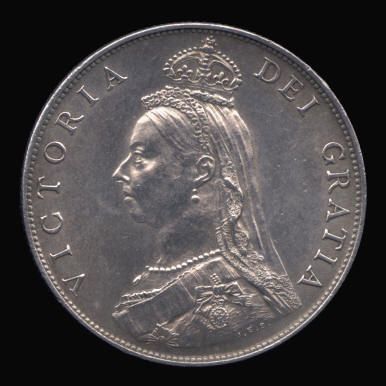
1887 Jubilee Florin
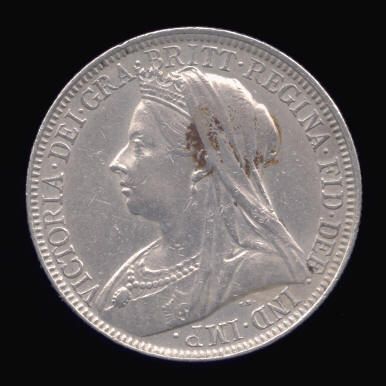
1900 Old Head Florin
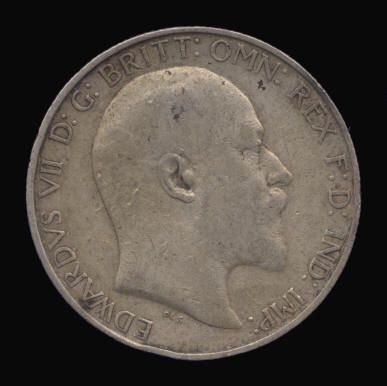
1907 Florin
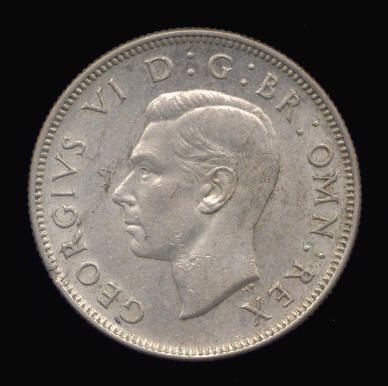
1946 Florin

1953 Florin